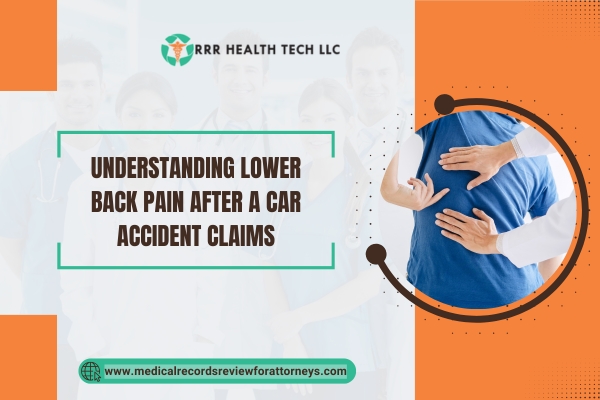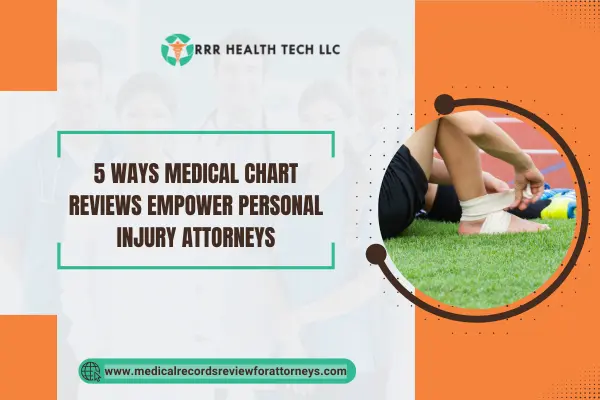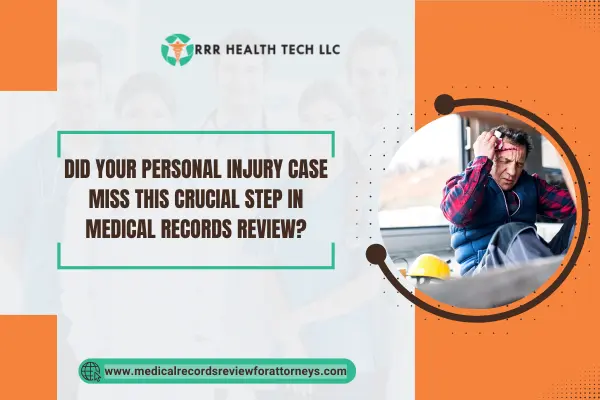
Introduction
Car accidents also tend to have a number of physical injuries to include the neck or low back pain for instance. As a rule of thumb, in cases of lower back pain, especially in patients with a history of such complaints, disability evaluation, potential impact caused by such pain and the process of getting their healthcare records analyzed, becomes very important. This article will analyze the issue of lower back pain after a motor vehicle accident from the legal point of view together with how such conditions can be substantiated with the help of an expert review of the medical records in order to help secure a successful claim.
The Impact of Lower Back Pain
1. Understanding Lower Back Pain
Lower back pain takes on different forms, be it: acute, chronic or radiating types. What is clear is that all these types of pain have a significant impact on a person’s life resulting in loss of income through wages, medical costs accrued in the process, together with psychological impairment.
2. Common Causes of Lower Back Pain after a Car Accident
- Whiplash Injuries: Commonly found in the rear-end accident types where the neck and spine take a lot of pressure, causing strain and pain on muscles in the lower back.
- Herniated Discs: In case of a car accident, any direct hit can leave the discs in the spine bulged or ruptured, bruising one badly and leaving pains.
- Soft Tissue Damage: Sudden movements during an accident can lead to back muscle and ligament sprain or strain which is referred to here as low back soft tissue injuries.
3. Statistics on Lower Back Pain
The National Institute of Neurological Disorders and Stroke states that as much as 80% of the population suffers from lower back pain at some point in their lives. In terms of car accidents, studies estimate that almost half of people in a car crash complain of back ache within weeks after an accident
Legal Considerations for Attorneys
1. Establishing Liability
Attorneys, in their bid to win compensation for their lower back pain clients are required to establish the liability on that lower back pain defendant. What this means is proving that the defendant’s negligence is the direct cause of the accident and the resultant injuries.
2. The Role of Medical Records Review
Medical records play a pivotal role in substantiating claims. A thorough review can reveal:
- Diagnosis and Treatment Plans: Understanding the medical history and treatment received can help establish the severity of the injury.
- Pre-existing Conditions: Identifying any pre-existing conditions that may have been exacerbated by the accident is crucial for accurate compensation calculations.
3. Compensation for Lower Back Pain
Compensation can cover various aspects, including:
- Out of this medication Expenses include cost incurred in providing treatment which comprises therapy and any other medical necessitation.
- Lost Wages: This includes the time that one has to stay out of work for his/her recovery.
- Pain and Suffering: This is the pain and suffering caused as a result of injury which includes emotional pain and other non-economic effects.
Case Studies
Case Study 1: John vs. XYZ Insurance
Overview: The insured’s wife alleged that because of an accident, her husband suffered severe lower back pain after being a rear seat passenger in the vehicle.
Challenges: John faced problems when attempting to prove that the back pain he was complaining of during the hearing was as a result of the accident because he had previously complained of back pains a number of times in the past.
Solutions: A thorough examination of John’s medical documents showed that although he did complain about having some pain in his lower back, he never did require any extensive treatment. Furthermore, the onset of discrete severe pain on the day of the accident was noted in the emergency room medical chart.
Case Study 2: Jane Smith vs. ABC Transport
Overview: Owing to side impact, Jane Smith experienced pain in ribs and persistent pain in the region of lower back.
Challenges: Jane was not able to illustrate how her ailment influenced her day to day responsibilities and the after-effects of the pain she had to deal with.
Solutions: The chronicle of Adjuster G. Michael also consisted of letters and reports from pain management specialist, which explained chronicity and evolution of pain and its implications.
Strategies for Attorneys in Handling Lower Back Pain Cases
1. Building a Strong Case
To effectively represent clients with lower back pain, attorneys should:
- Obtaining Medical Records: a. Make certain that thorough and extensive medical papers are compiled and scanned into the computer systems.
- Securing Medical witness: Conclude the services of medical practitioners who are able to provide any testimony regarding the kind of injuries and their prognosis.
2. Effective Communication with Clients
Maintaining open lines of communication with clients is essential. Attorneys should:
- Explaining Client’s Rights: Inform clients clearly about their rights to receive compensation and that it is useful to record pain and the treatment procedures.
- Maintaining Records of the Client’s Appointments: Advice clients to adhere to their appointments logging their health issue for further records.
3. Utilizing Technology for Case Management
Leveraging technology can streamline the process of managing cases involving lower back pain:
- Case Management Software: Use software to organize medical records, track deadlines, and manage communications.
- Telemedicine Options: Encourage clients to utilize telemedicine for follow-up appointments, making it easier for them to receive care without the burden of travel.
Conclusion
Lower back pain following a car accident can have profound implications for victims and their families. For attorneys, understanding the complexities of these injuries and the importance of medical records review is vital in building a compelling case for compensation. By addressing common questions, utilizing case studies, and implementing effective strategies, attorneys can better serve their clients and enhance their chances of a successful outcome.


